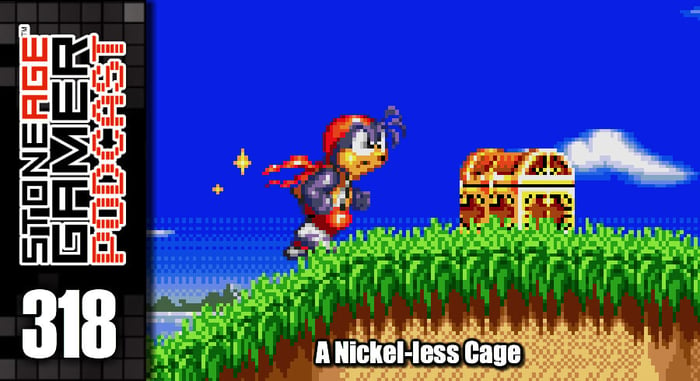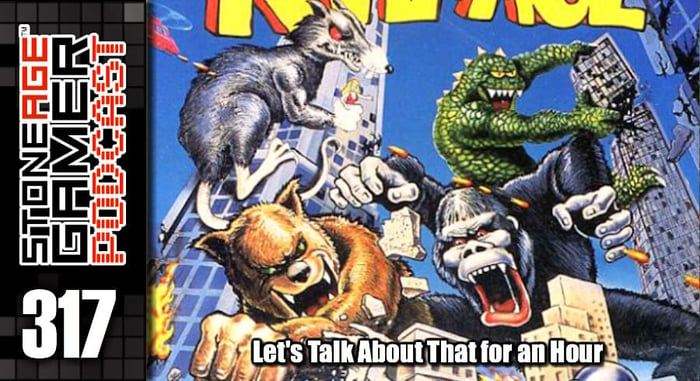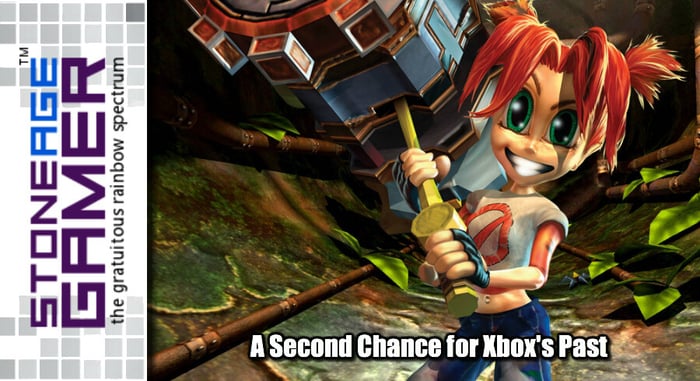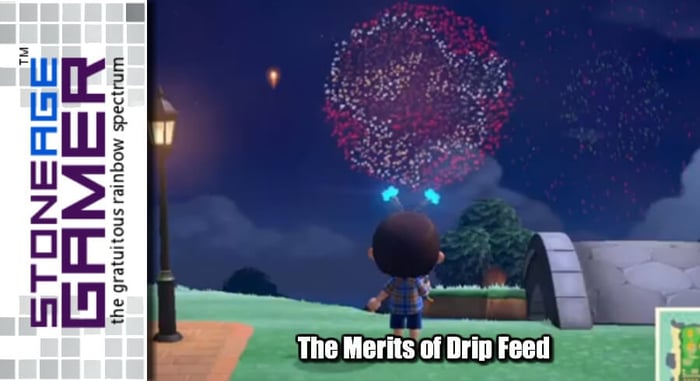
The Merits of Drip Feed
Slow and steady, etc., etc...
Chances are, you’ve heard of Animal Crossing: New Horizons. It’s been kind of a big deal since it launched, and I’m sure the pandemic has contributed more than a little to just how much time people have spent with the game. One gripe I’ve seen a lot of though is a “lack of content.”
This actually speaks to a larger initiative Nintendo seems to be taking these days, where they intentionally drip feed content into certain games instead of launching them “complete.”
This is an interesting approach, and one that I’ve personally had little to no problem with. However, there’s a pretty vocal group out there who are incredibly ticked off about it, and while I can see their perspective, I’m not sure I completely understand it.
The Binge Stream

In case you don’t know what it is I’m talking about, let’s put it into perspective by comparing it to television shows. Now that the majority of new shows are watched via streaming services, there have been two schools of thought on how to release said content. The standard at the beginning was the Netflix route, which is to drop it all at once and let people binge to their heart's content. More recently, we’ve been seeing other streaming services take the weekly drop approach, similar to how shows used to air on broadcast television. The Netflix route certainly has its advantages for the viewers, allowing them watch at their our own pace, even if that pace involves cramming it all down their throats as quickly as humanly possible. I get that, as I’ve watched plenty of shows where at the end of an episode I’ve just let Netflix keep on going even when I know I should just turn the TV off and go to bed. I’ve also experienced the undeniable agony of having a show end on a cliffhanger only to have to wait another whole week (or more!) before seeing what happens next.
But let’s look back at a couple of recent examples that I think illustrate why the slower method is superior.
Think back to Stranger Things season 3. It was a huge deal, as all Stranger Things seasons have been. But 2-3 weeks later, who was still talking about it? Nobody. Now let’s look at The Mandalorian on Disney+. New episodes came out weekly, and every single week the show was being talked about. It was part of the collective conversation for a whole lot longer than Stranger Things 3, and not just because The Child was so darn adorable.
When Lost was airing, or Game of Thrones, part of what made those shows feel so grand and long lasting was the conversations in between. If you watched Sherlock when it aired, you no doubt spent countless hours between seasons and episodes trying to figure out what was going to happen next, or how what you just saw happened at all. This kind of viewing leaves you with time to reflect on everything that’s happened. That doesn’t exist when binging. So while it’s immediately satisfying, it’s hard to argue that it’s what’s better for the show in the long run.
A Fresh Approach
Now let’s transition back to games and look at Splatoon 2, Nintendo’s first major success in the drip feed protocol (or at least the first one I can think of).
When Splatoon 2 launched, there were lots of folks out there who complained that it wasn’t much of a sequel. There wasn’t exactly a ton of new stuff to do, and it was basically just Splatoon on Switch. But Nintendo supported the game with regular free updates and community events. When they were done adding stuff, it really did feel like Splatoon 2, it just took some time to get there.
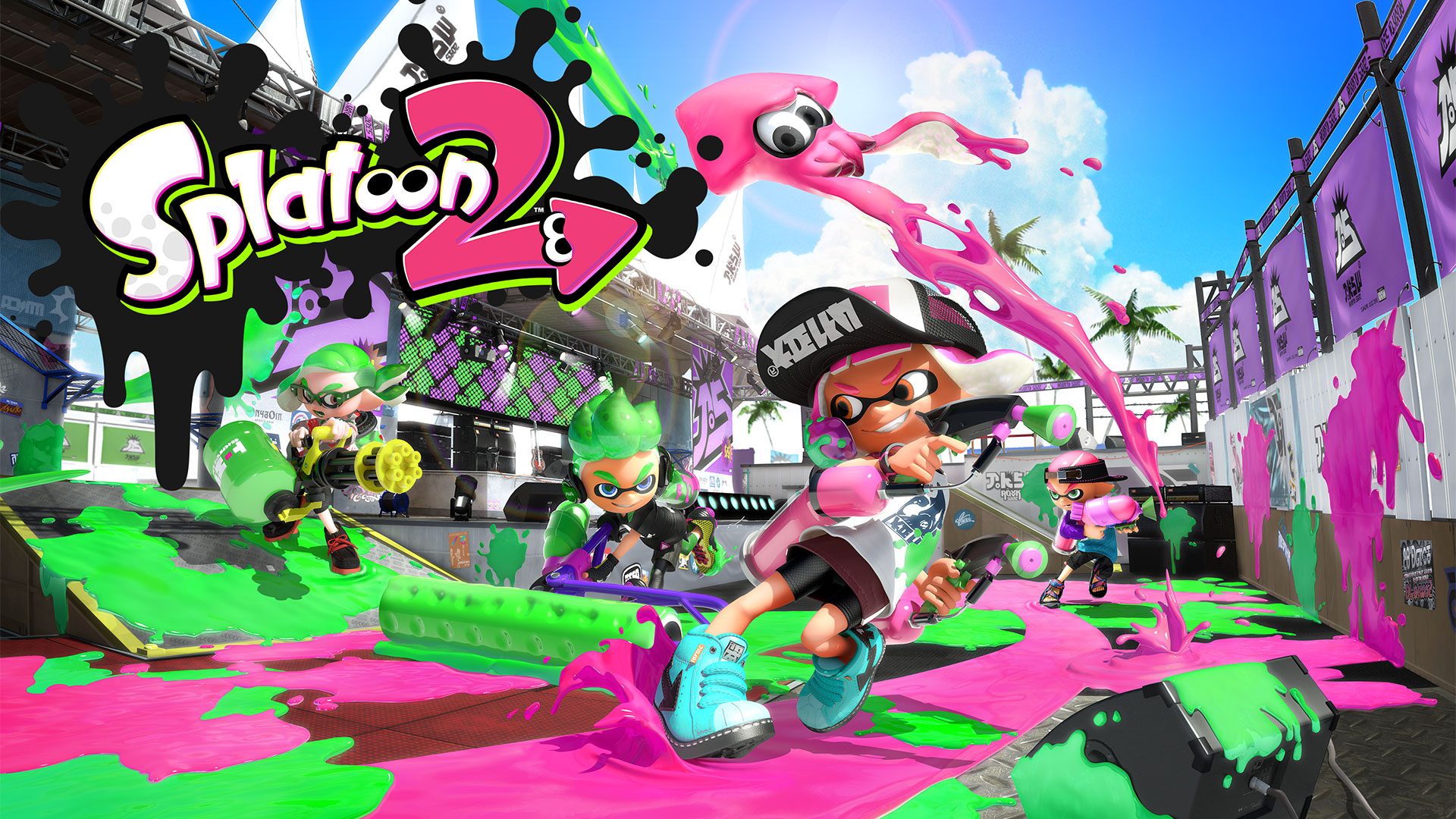
On one hand, if you were just playing the heck out of Splatoon on Wii U, I can see how this would be a bit frustrating, but on the other hand, look at the kind of game experience it created overall. The game’s evolution was very guided, it stayed in the collective gaming conversation for a remarkably long time, and even without the features that were eventually added, the game was still fun.
Now let’s look at Animal Crossing: New Horizons. Out of the gate, before any of the updates, New Horizons offered a lot of fantastic quality of life improvements over New Leaf on 3DS, but it was missing a metric ton of characters and options that long time Animal Crossing fans knew about. Nintendo said straight away that regular free updates were coming, but still, New Leaf had all this stuff out of the box, and New Horizons didn’t.
So, if you spent time with New Leaf, it’s understandable that you could look at the game and argue on principle that it was a big step back because of all the stuff that wasn’t there, but in practice I personally prefer this method.
I’ve put just shy of 200 hours into the game myself, which is a lot of time. I know there are a LOT of people out there who have dwarfed that number, and by and large those are the people who are complaining that the game feels incomplete. The question is, was the game actually designed for that kind of play? Doesn’t marathoning through every single thing you can do as quickly as possible sort of defeat the entire purpose of Animal Crossing?
If you got the game, time travelled, gamed the turnip prices, and got everything done in a week, is that really the game’s fault? Everything about it seems to be built around the idea that you should play for a little bit every day, which is how I’ve been approaching it. I still play every day, and I just paid off my final house expansion a week or two ago. There’s still plenty of stuff to do, plenty of bugs, fish, and sea creatures to catch, flowers to groom, etc. I have something to do in East Tod every single day, and I’ve spent more time playing this game than any other game in the franchise, which is saying something because I’ve been obsessed with Animal Crossing before. But it wasn’t like this, and that’s because of the drip feed content.

Knowing that there are going to be more updates every couple of months keeps me interested in coming back for more. The incredible museum has me making sure that I catch every available bug, fish, and sea creature every month. I don’t time travel or visit islands on other hemispheres to get it all done quicker, I just live within the game’s intended limitations and I’ve been incredibly happy for it. Yes, it’s getting to the point now where I’m finding fewer things to do every day, but I’m writing this on July 30th. In a few days it’s going to be August and there will be a fresh lineup of bugs, fish, and sea creatures to catch.
The way things are going, I will probably continue to play New Horizons every single day for a full year, and the only money I ever spent on it was the initial purchase price of the game. So no, Capn’ and Brewster aren’t there, and there’s no shortage of stuff I’d love to have sooner rather than later, but how much more special will all that stuff feel when it finally happens? Yeah, I wish Redd would visit more often so I could fill up my art museum, but having his boat parked on my secret beach all of a sudden felt incredibly cool. Every update, even the small stupid ones like the most recent one with the fireworks, feels special. They gave the game room to grow organically without feeling overwhelming out of the gate. I love that.
Maybe a bit too slow
On the opposite side of the spectrum, we have Nintendo’s approach to their retro games. Back when the Wii launched with this incredible lineup of games on their Virtual Console service, I was in heaven. Every single week they’d add 3-4 more games for me to dump a bunch of money into buying, and the incredible breadth of games I soon had sitting on my Wii was borderline absurd. Then the releases started slowing down. Then the Wii U came out and the releases got even slower. Then the Switch came out and Virtual Console was changed to Nintendo Switch Online and the drip feed was truly in full effect.
This bugs me because there are so many classic games I want to have on my system so I have the option to play them, but when I really think back to the glory days of the Wii Virtual Console, I start to see that maybe this slower approach has some merit.
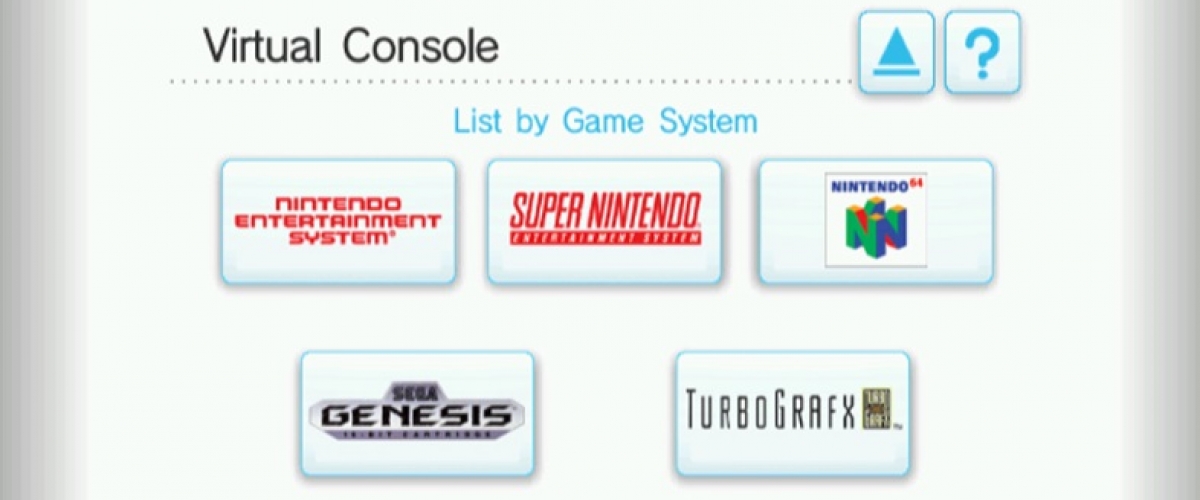
I bought a virtual ton of games on VC that I’ve never spent any actual time with. Just bought them because they were there and I wanted to play them someday. That resulted in me wasting a whole lot of money, while simultaneously being angry that Nintendo wasn’t giving me more opportunities to waste more.
When Nintendo Switch Online launched, I was actually pretty happy with it. They started with a nice selection, and they kept the games coming once a month. But after they added SNES games, things slowed down too much. I like the notion that they’re giving these more obscure games a chance to shine, and I think it’s actually quite brilliant in theory, but in practice, it’s only halfway to where they should be.
Giving stuff like Operation Logic Bomb the spotlight is a good thing. More people have probably played that game on Switch than ever did on SNES in the first place. It’s a great way to get more classic games more playtime. That said, how are we this deep into the console’s life and only now are we able to play Donkey Kong Country?
On the Wii VC, the only games that really sold were the big names, sort of how things went when most of these games were originally released. If people have the chance to buy some random NES game they’ve never heard of or Super Mario Bros. 3, they’re going to buy Mario 3. So limiting access to those old games gives these other ones a chance to shine. The problem is, those classic games are what makes Nintendo Nintendo, and not being to play Super Mario 64 on Switch is frankly completely silly.
In this instance the drip feed approach sort of works but is incredibly flawed. Personally, I’d rather see them tackle this problem by combining what they did with Splatoon with what they’re already doing.
Get as many games on these services as possible right off the bat. Create this gigantic library and charge a monthly or annual fee to access it. But instead of adding new titles every couple of months, which is way too long of a wait, choose a different game to have a massive monthly online competition with. Pit two games against one another and have people compete for high scores or speed run records. Make the community aspect of Splatfests how you keep these retro games in the public eye, and give people a better incentive to play City Connection than “there literally isn’t anything else to play.”
The point of all this is, I think Nintendo’s onto something here. I think their approach to longevity in games is way better than the “games as service” plan others have been cooking up, but in typical Nintendo fashion, they just aren’t quite there yet. I hope they do get there though, because the potential is limitless. In the meantime, I’ll keep visiting East Tod until I run out of things to do, which may very well be never at this rate.


